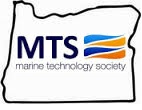Katherine Ball, University of Washington
Light Refraction for In-Situ Micro-Plastic Sampling: m-PARR as a Low Cost Sampling Device
The persistence of micro-plastics in the marine environment is a global issue with implications for marine organisms and global industries. A low-cost and accessible alternative for sampling micro-plastics would improve spatial knowledge of the pollutant and increase the support behind identifying a solution to the micro-plastic issue. We propose a flow-through angular backscatter detector to sample micro-plastics in coastal zones. The existence of in-situ devices using light refraction for measuring plankton shows potential for adaption for micro-plastics sampling. The low-cost, portable design of m-PARR (Micro-plastic Angular Refraction Recorder) allows deployment in various environments by a small research group. m-PARR utilizes technology similar to flow cytometers for in-situ identification of unique particles. The flow-through design pumps large volumes of water through the detector giving a similar volume of analysis as manta net tows. The m-PARR prototype has limitations due to the short design and build period. The basic sensor design in the prototype is capable of general particle detection. m-PARRs particle sensing ability requires further work such that unique micro-plastics can be identified. Designed for surface samples, the m-PARR prototype will be adaptable for depth sampling. The simplicity, dependability, and deploy ability of m-PARR allows citizen science involvement in studying micro-plastics. Citizen scientists have shown interest in testing the m-PARR prototype, showing potential for the slim, flow-through design to drastically increase our knowledge of coastal micro-plastic variation.
